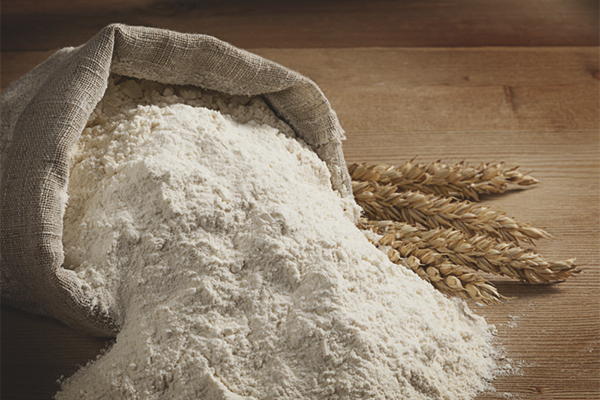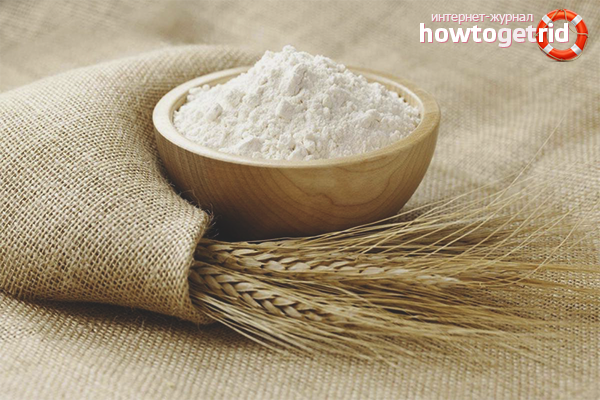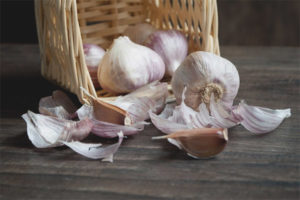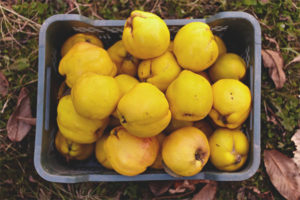The content of the article
Flour is a strategic product that is in every home and in every family. In the villages of the hostess said that if the house is butter, flour and sugar, you can survive any hunger. And indeed - flour is used by a good housewife almost every day - she will delight home-made pies, then bake buns. That is why the flour ends fairly quickly. In such cases, experienced women decide to buy flour for future use. Firstly, flour in a season is cheaper, and secondly, you don’t need to carry it every time, and it’s somehow calmer when flour is always at hand. However, another question arises here - how to store this flour?
How to store flour
Flour can be stored in canvas or paper bags, glass or plastic containers. If you bought the flour in a small package, you can put it in the fridge, but only before it is opened. Then it should be poured into an airtight container.
If you plan to remove the purchased flour for long-term storage, it should be dried beforehand. To do this, pour the flour on a sheet of parchment or a clean tablecloth and even a thin layer. After a few days, the flour can be removed for storage. If you keep a few pounds of flour, pour it into a fabric bag or glass jar. If you prefer to have a large supply of flour, then you need to buy bulk plastic containers with a tight-fitting lid. In the hardware stores a wide selection of such dishes.
Flour can be stored in ordinary plastic bottles from under mineral water. They are tightly closed with a lid and easy to move. If you do not like narrow necks, often bake and you need ease of access to flour, you can pour the product into a plastic bucket with a lid. There you can also leave a convenient plastic dipper or scoop and sieve.
Where to store flour
Store flour in the kitchen drawer, pantry, storage room, on the mezzanine. Do not forget to make sure that there are no products and tools with a pungent smell. The fact is that flour is very sensitive to foreign smells, therefore it cannot be stored near household chemicals, spices and medicines. If you store flour near detergents, future baking anyway will have a slight smell of soap. By the way, if you store flour in the kitchen, it is better to place the container at the level of the floor, on the bottom shelf. At the top of the room the air is much warmer.
How to protect the flour from insects
Flour needs time from time to check for moisture and insects. If the flour has become wet, pour it on a flat surface and let it dry at room temperature. From time to time, try the taste of flour, so that it does not become bitter. To prevent insects from getting in the flour, you can use some folk remedies.
- The canvas bag in which the flour will be stored is pre-soaked in saline. It is well known that salt is an excellent preservative, it will not allow the bugs to sneak inside the bag.Just dissolve three tablespoons of salt in a liter of water, put a bag in it and dry it without rinsing.
- You can drop a metal object - a coin or a knife into a bag of flour. This will deter pests and they will not eat such flour. The main thing is that the coin does not get into baking!
- Blackflies and other insects do not like the smell of calendula and avoid it in every way. Dry a few twigs of this plant, put it in a canvas bag, or just wrap it in a handkerchief. Then dip the calendula straight into the flour.
- Scare bugs with garlic. In the middle of the tare with flour, lower a few cloves of garlic and no pests you are not afraid.
- In the bag of flour, you can drop a few bay leaves. This will scare away insects, but will not give the flour a foreign smell.
- In the fight against pests, there are modern ways. Put in a top layer of flour a pair of open mints chewing gum. Not a single insect thrusts itself into such flour.
If the insects were still able to penetrate the flour, do not rush to throw away the product. Flour it is enough just to sift through a fine sieve, dry and pour into a new container. If you use the same container, you need to pre-rinse it, rinse it with salt composition, dry it and only then pour the sifted flour.
How much flour is stored
Among the tips for storing flour can be noted the following. Before you pour the flour into a plastic container or plastic bottle, make a “salted pillow” on the bottom. To do this, sew a bag of several layers of gauze, put coarse salt there and place it on the bottom of the container. Salt perfectly absorbs moisture and protects the flour from moisture.
In ancient times, flour was stored as follows. A large canvas bag of flour was lowered for a few seconds in water, and then quickly removed. A dense layer of dough was formed around the bag, which is impossible to overcome either by rodents or insects. Thus, the flour could be stored for years.
If you do not like baking and rarely bake, there is no point in buying flour for future use. However, if you have a big family, if you have children, and you love messing around with dough, buying flour is a very rational and correct decision.Keep the flour properly to more often pamper your homemade crispy pastries.
Video: how to store flour at home












To send